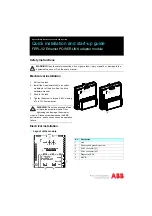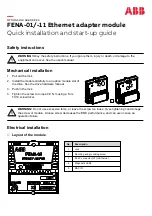
Standard Components
Operation
The Two Way Flow Altitude Automatic Control Valve (ACV) is
designed to open, allowing flow into a reservoir or elevated storage
tank (tank fill), and close drip tight when high water level is achieved.
The valve also opens, allowing return flow (tank discharge), when
upstream pressure falls below reservoir head pressure. The Altitude
Pilot remotely senses static tank head pressure (water level) through
a field installed sensing line, and directs pressure into and out of the
cover chamber of the 3-way Accelerator Pilot.
P(L)
1
X
X
X
X
Y/FC
7
5
4
4
6
2
3
CLOSES VALVE
OPENS VALVE
FLOW
(Tank Sense Line)
When the cover of the Accelerator Pilot is pressurized, the main valve cover chamber is vented downstream (dry drain) or to atmo-
sphere (wet drain), causing the valve to open fully. When the cover of the Accelerator Pilot is de-pressurized, the main valve cover
chamber is connected to upstream pressure, causing the valve to close drip tight.
As water level decreases, static tank head pressure falls below the adjustable setpoint of the Altitude Pilot, causing it to pressurize
the cover of the Accelerator Pilot, opening the valve. As water level increases, static tank head exceeds the adjustable setpoint of the
Altitude Pilot, causing it to depressurize the cover of the Accelerator Pilot, closing the valve drip tight. Valve opening and closing speeds
are separately adjustable. The Position Indicator with Air Bleed Petcock allow for visual indication of valve position and easy venting of
air entrapped in the main valve cover chamber.
When upstream pressure falls below reservoir head pressure, a Check Valve installed in the pilot control system "Return Flow Line"
opens, connecting the main valve cover chamber to the upstream pressure zone, causing the valve to open allowing reservoir pressure
to return into the upstream pressure zone (Tank Discharge).
Specify Tank height
PRIOR
to ordering.
1 – Main Valve (905GD – Single Chamber)
2 – Model 22-1 Accelerator Control
3 – Altitude Control
4 – Check Valve
5 – Adjustable Opening Speed
6 – Adjustable Closing Speed
7 – 3-Way Ball Valve
P – Position Indicator
X – Isolation Cocks
1. Prior to installation, flush line to remove debris.
2. Install valve so the flow arrow matches flow through the line, and gauges to monitor valve inlet and outlet pressures. A Position
Indicator can be installed to provide visual indication of valve position and operation without disassembly.
3. Install isolation valves upstream and downstream of the main valve.
Note:
If using butterfly valves, ensure valve disc does not contact the main valve.
4. Provide adequate clearance for valve servicing and maintenance. Refer to valve servicing dimensions on next page.
Avoid installing valves 6" and larger in the vertical position (main valve stem horizontal). Automatic Control Valves (ACVs) are
designed for horizontal in-line installation, with the cover facing up (main valve stem vertical). Slow operation or premature stem
and guide wear may occur if valve is not installed according to factory recommendations. Consult factory for detailed engineering
review prior to ordering if valve is to be installed other than horizontally in-line.
5. If valve is equipped with a pilot control system, extra precautions should be made during installation to protect the piping circuit
from damage. Only remove the pilot control system from the valve if necessary. Tubing and fittings should be kept clean and
replaced exactly as removed. Consult appropriate hydraulic schematic to ensure proper re-assembly.
6. Check to confirm that the sense line is installed and connected.
7. After installation, vent entrapped air from valve cover and pilot system by following instructions on Technical Bulletin.
Start-up of an automatic control valve requires that proper procedures be followed. Time must be allowed for the valve to react to
adjustments and the system to stabilize. The objective is to bring the valve into service in a controlled manner to protect the system
from damaging over-pressure.
Installation
960GD-17 (Globe) Two-Way Flow Altitude Control Valve
2 IOM-A-ACV-960-17_660-17 2115
EDP# 1917058
© 2021 Watts






























